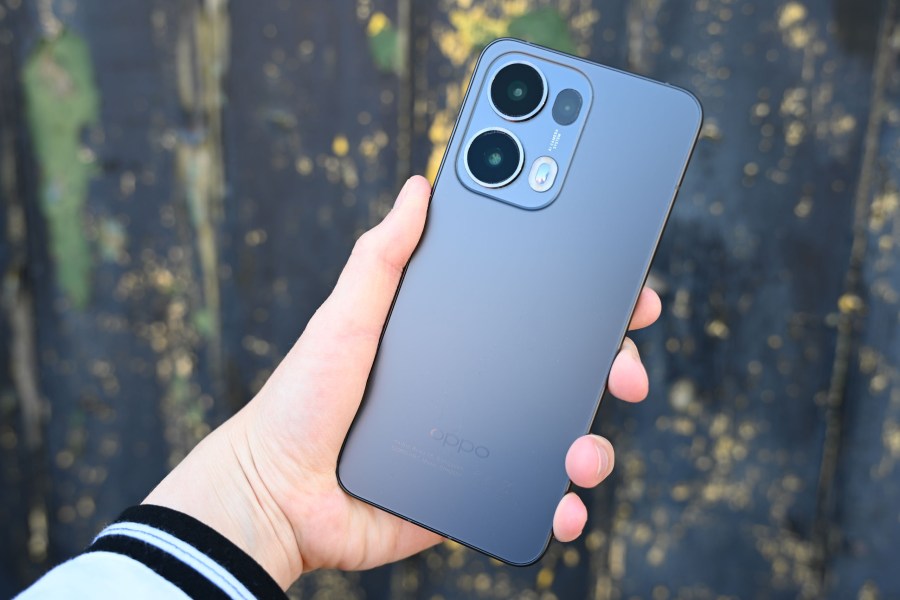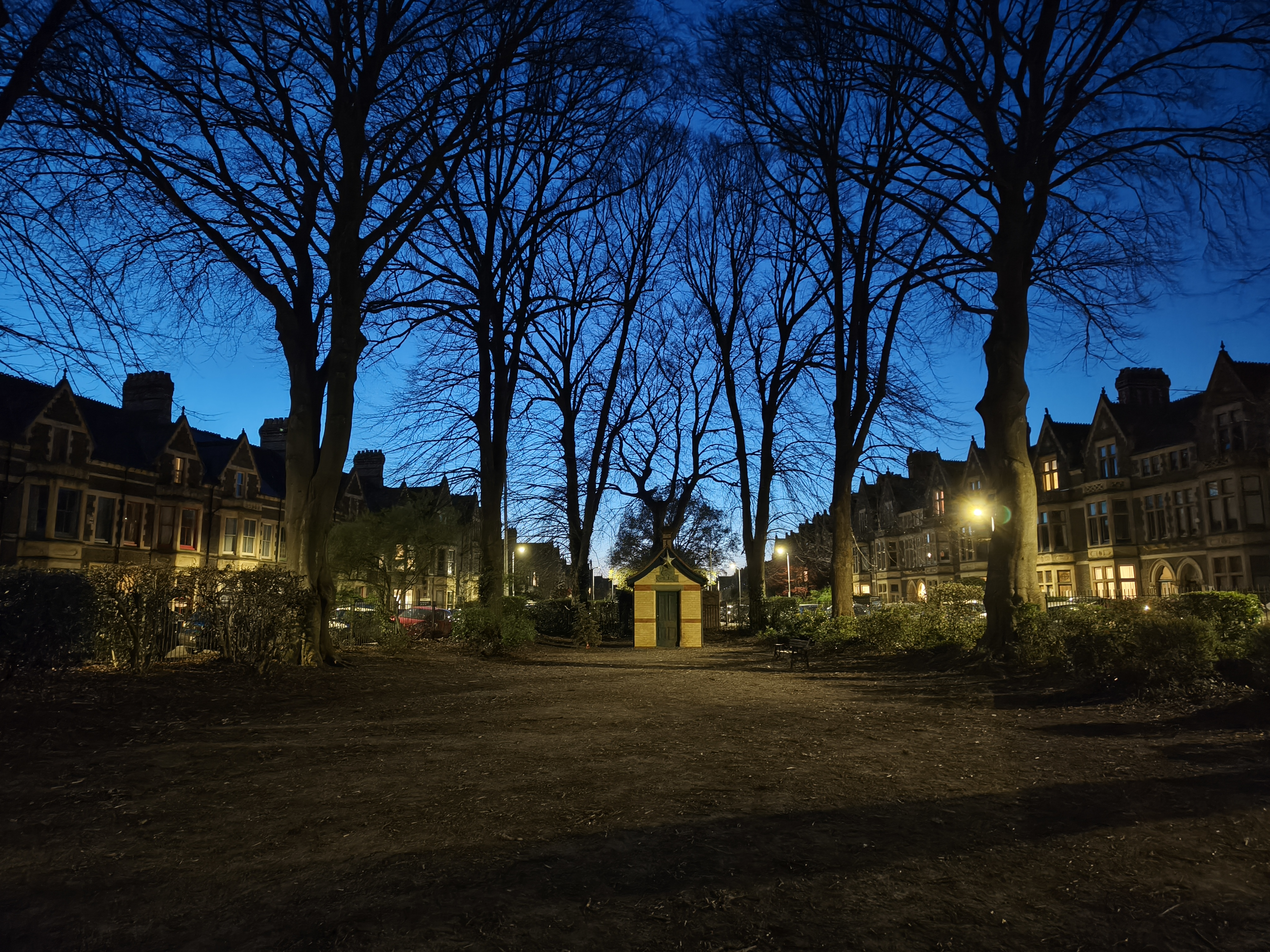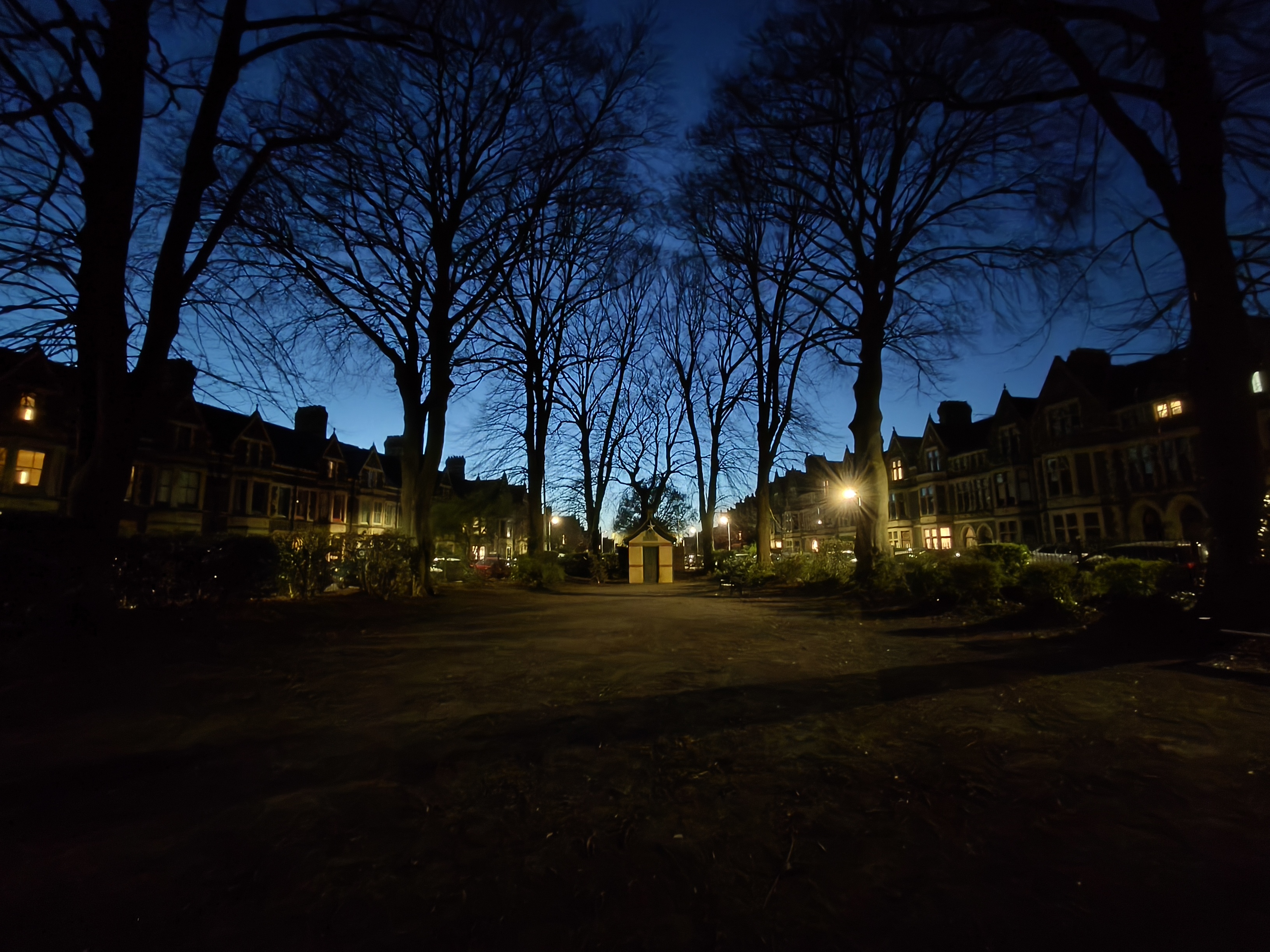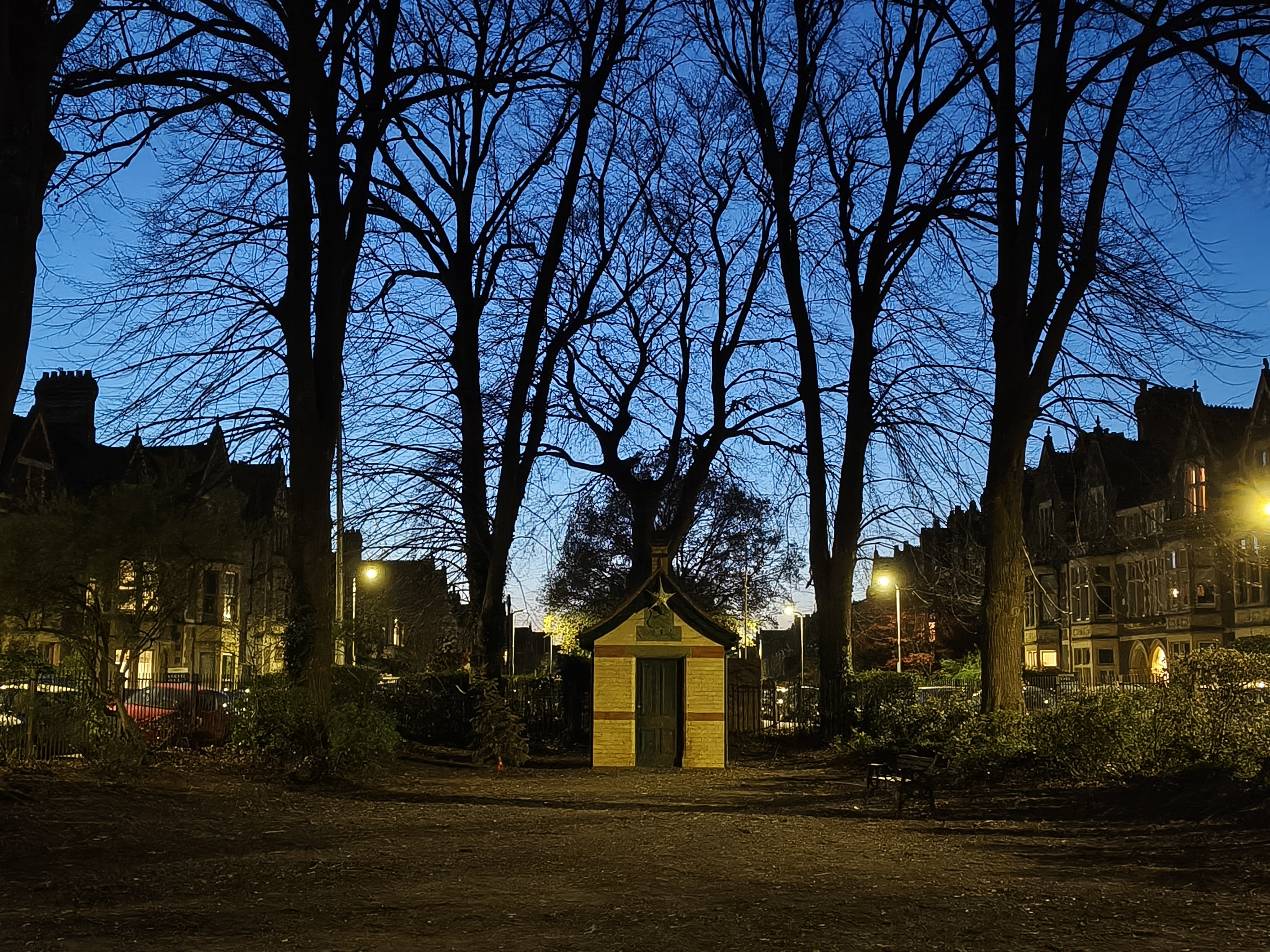Amateur Photographer verdict
With two well-performing cameras and a third that does a reasonable job too, plus a host of AI editing tools, the Oppo Reno 13 Pro is a smart buy in the mid-range sector- Two high resolution sensors
- Selfie camera has AF
- Big screen, slim bezels
- Jump in price compared to last year
- Low resolution ultrawide lens
- Not available in all territories
There’s a lot of available options right now in the best budget smartphone category, with many affordable devices now offering excellent picture quality and a range of other useful features.
Oppo Reno 13 Pro: At A Glance
- 50MP f/1.8, 24mm equivalent camera, AF, OIS
- 8MP f/2.2, 14mm equivalent ultrawide camera, AF
- 50MP f/2.8, 85mm equivalent (3.5x) telephoto camera, AF, OIS
- 50MP f/2.8 selfie camera, AF
- 4K video at up to 60fps
- 6.83-inch AMOLED screen, 450ppi, 1200 nits peak brightness, Corning Gorilla Glass 7i
- 5800mAh battery with fast charging (no wireless charging)
- Color OS based on Android 15
- MediaTek Dimensity 8350 processor
Oppo has been a name to keep an eye on for a while. The Chinese brand has some fantastic top-end models, such as the Oppo Find X8 Pro, and the excellent Oppo Find N5 (one of the only foldable phones I actually find to have a decent camera setup).
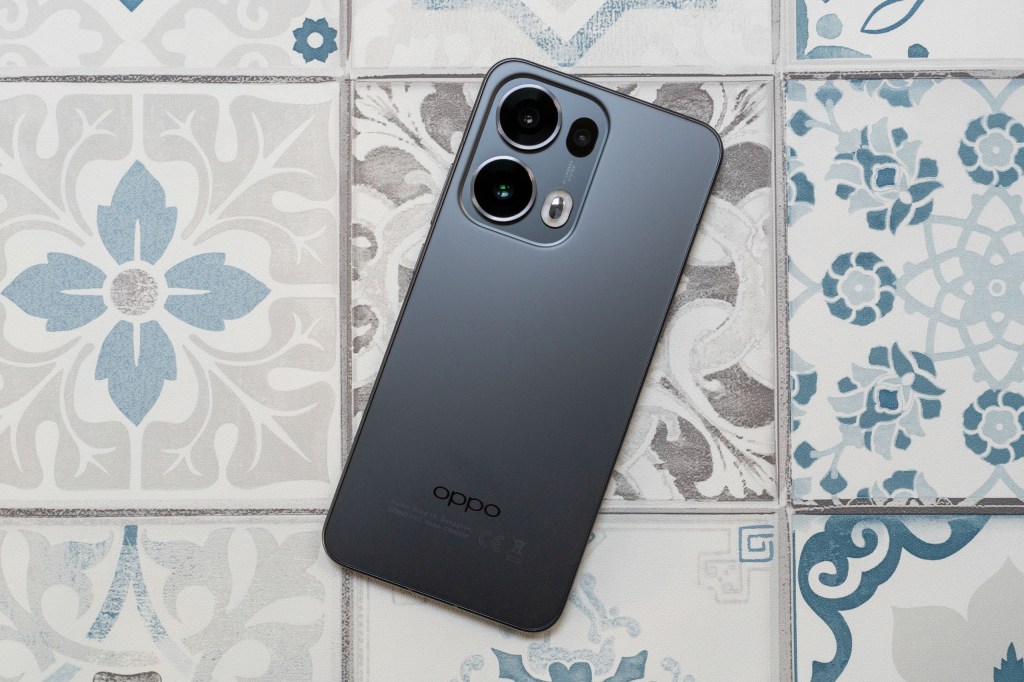
Sadly, not all of its devices are available in every market. Fortunately however, the Reno 13 Pro is one such model that has quite a wide release, being available in a number of different territories that includes the UK and India, but not the US.
Reno is Oppo’s mid-range range, with two other devices also available within it – the Reno 13 and the Reno 13 FS. The 13 Pro that I’m reviewing here is designed to be the “flagship”, but at a much, much cheaper price than other flagship models – including Oppo’s own Find range.
With a price of £649, it goes head to head against similarly priced phones such as the Samsung Galaxy S24FE, Google Pixel 9 and the iPhone 16e. That said, it’s quite a big price jump from last year’s Oppo Reno 12 Pro model (£499 at the time of launch) – so it’ll be interesting to see if the price hike is justified.
Let’s look at what you get for your cash…
How we test camera phones
We review smartphones from the perspective of choosing one for its photography and camera performance. We look at what the Oppo Reno 13 Pro offers, and the features included for photography and video, paying particularly attention to the cameras on the phone, photo editing capabilities, as well as the output from each different lens. We consider other aspects too, such as the screen quality and battery life.
Oppo Reno 13 Pro: Features
The Reno 13 Pro features a triple-lens setup, a relative rarity still in the mid-range sector. However, before you get too excited, it’s important to remember that while two of the sensors have high resolutions (50MP), the ultrawide is an 8MP device. We’ll see how that gets on shortly.
For the main sensor, we’ve got a 50MP 24mm f/1.8 equivalent lens, which should do pretty well. A telephoto at this price point is a “nice to have”, and at 50MP, f/2.8 and 85mm equivalent, it reads like it should be quite a good performer too.
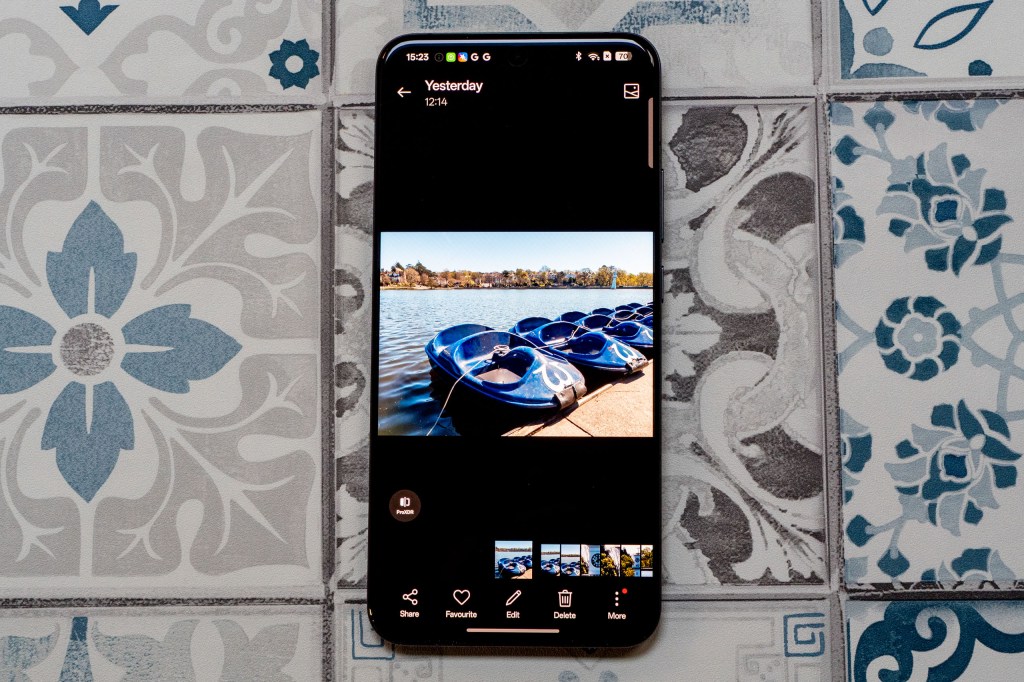
Other interesting features include a large 5800 mAh battery (I’m disappointed not to see wireless charging though), a 6.8-inch screen, IP69 waterproofing and 4K video at up to 60fps.
The big deal about this series however is the addition of a host of new AI functionality. It’s this which seems to have given Oppo the justification to ramp up the price somewhat. The AI comes into play when you want to zoom past the 3.5x afforded by the telephoto lens, and there’s also a set of AI editing tools that you can use after the fact too.
You can also use the AI tools for other non-photographic things too, with Google’s Gemini built in for various functions.
Oppo Reno 13 Pro: Handling and Design
With its 6.8-inch screen, the Reno 13 Pro is definitely on the large side of things. However, it has some of the thinnest bezels on the market so overall the feel isn’t quite as massive as it could be.
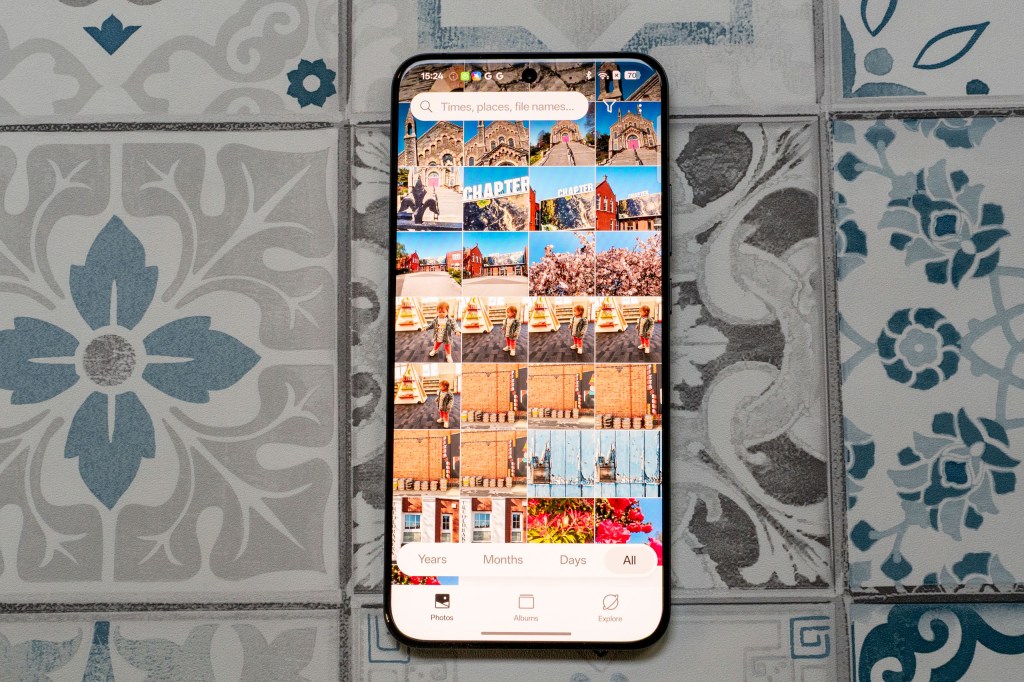
I’ve been using the “Graphite Grey” version, and I have to say I like the new design of this phone, it feels sleek and cool – and actually looks a lot more expensive than it is, with a brushed steel sort of look about it. There is also a “Plume Purple” option which is a bit more interesting perhaps, but I think is also a little cheaper looking.
What’s more impressive though is the IP69 waterproofing. That’s one step up from the now pretty standard IP68, making it market leading for water resistance. You can splash it with hot water up to 80 degrees and you can submerge it as deep as 2 metres, so the likelihood of it surviving a dip in the bath, a rainshower is very high. Indeed, Oppo has been marketing this phone for its underwater capability, showing people using it in swimming pools and the like. If that’s something you want to do – good news I guess.
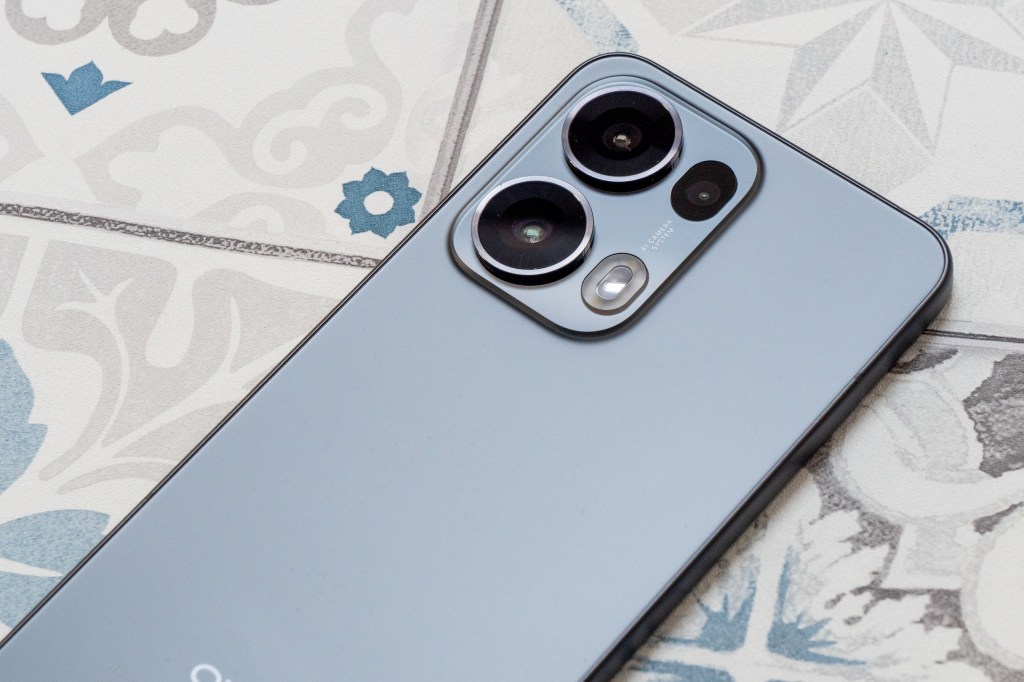
Beyond that, there’s also other tough credentials including an aluminium frame and drop protection, as well as Corning Gorilla Glass screen. All pretty good for a mid-range phone, and should see it last well compared to other cheaper models.
The maximum brightness here however is a bit of a disappointment, going up to only 1200 nits. That’s a little bit on the low side, although it is about average for mid-range devices. Oppo perhaps could have (literally) outshone the competition by pumping this up a bit, but you can’t have everything.
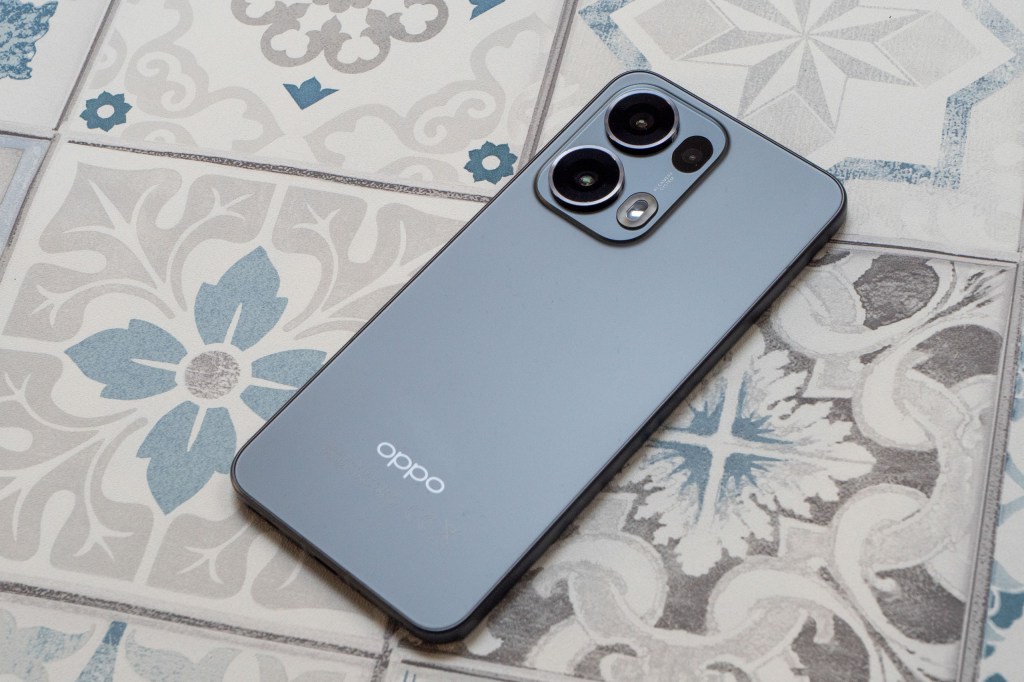
On the back of the phone are the three lenses, with two large obvious ones for the wide and telephoto, and a much smaller, unobtrusive one for the ultrawide. The bigger lenses stick out a bit from the back of the phone, so the phone wobbles just a little when placed on a flat surface – but a case will likely sort that out.
Oppo Reno 13 Pro: Native Camera App
There’s a fair few different shooting modes to choose from when using the native camera app, and it’s good to see no skimping just because this is a mid-range device.
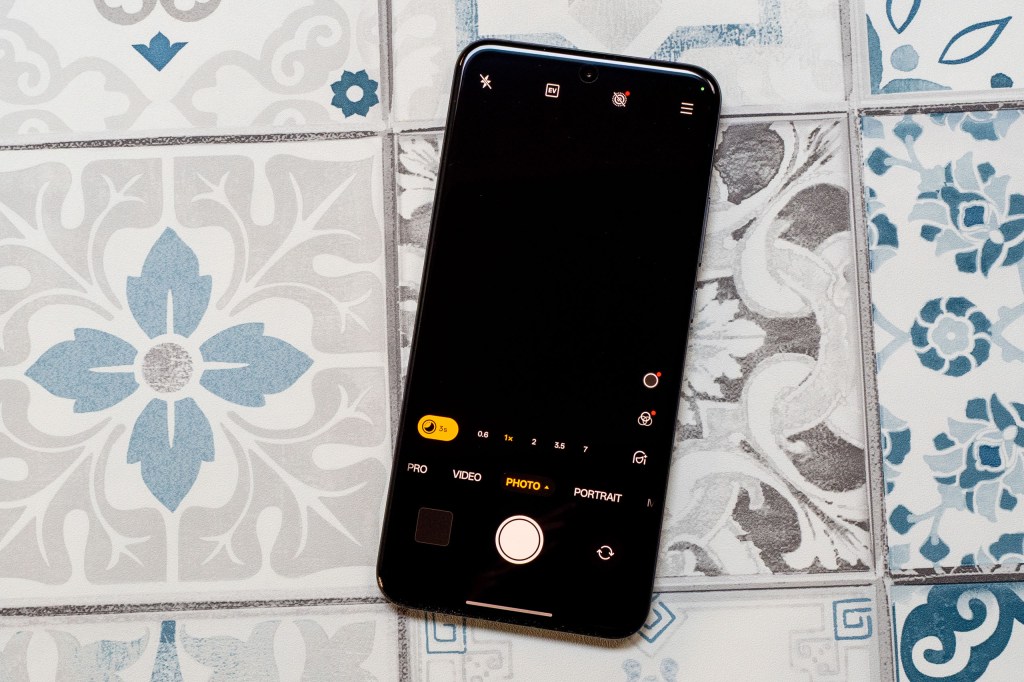
The default shooting mode is Photo, with quick taps to get you from the 1x lens to the 0.6x and 3.5x, as well as shown options for 2x and 7x, which are crops of the other lenses. Tap the 1x lens and you’ll also be treated to 1.1x (28mm), or 1.3x (35mm) crops too, which is a really useful function. If you want to go beyond the 7x option displayed on screen, pinch to zoom up to 120x. Again, we’ll see how well that level of zooming gets on a bit later.
Within the Photo mode, there’s a range of other changeable options including adding filters, switching on “livephoto”, switching on/off HDR, adjusting aspect ratio and so on. Some “Smart Scene” options can also be used for photographing subjects such as fireworks, silhouettes and stage shows.
If you’re shooting in low light, a night mode will automatically switch on, while if you bring the phone close to a subject, a macro mode will automatically activate too – switching to the wide angle lens. You can also manually activate a Night mode if you prefer (but not a macro mode).
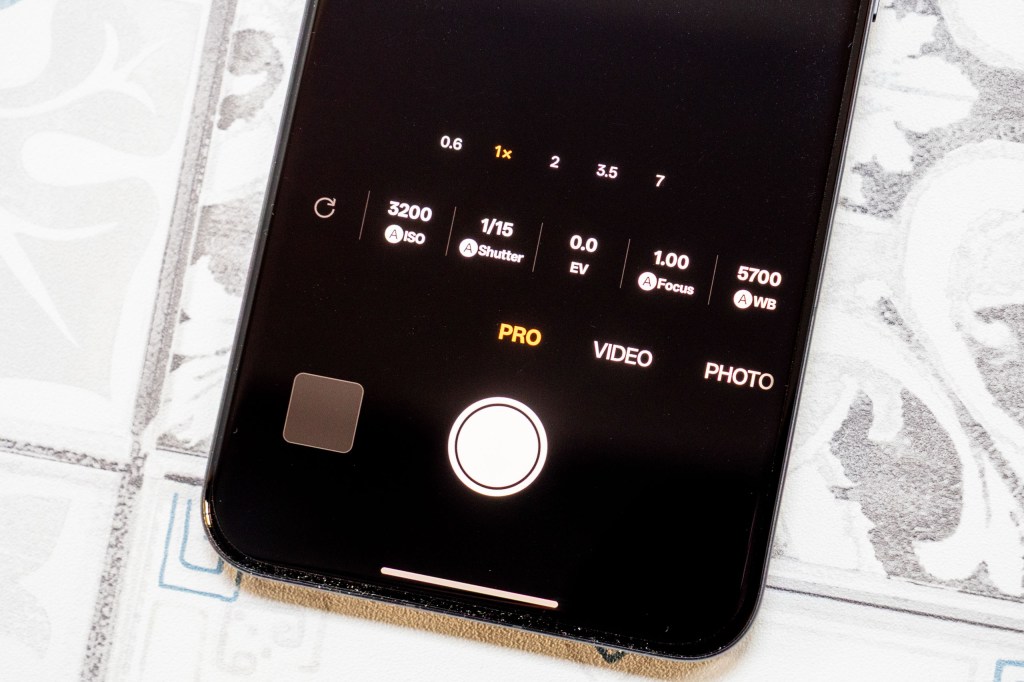
Photographers might be interested in the “Pro” mode which gives you the ability to change a range of settings, but there’s no raw format shooting available. That’s pretty much to be expected at this price point – and I’m not sure it’s utilised all that much by most people anyway.
A Portrait mode lets you shoot at 1x, 2x or 3.5x, as well as adjust the level of background blur, change the “lighting” settings, and even use some retouching – I tend to stick with the clean and basic options though for the most realistic results.
In terms of Video, there’s a general Video shooting mode, as well as Slo-Mo and Time-Lapse options.
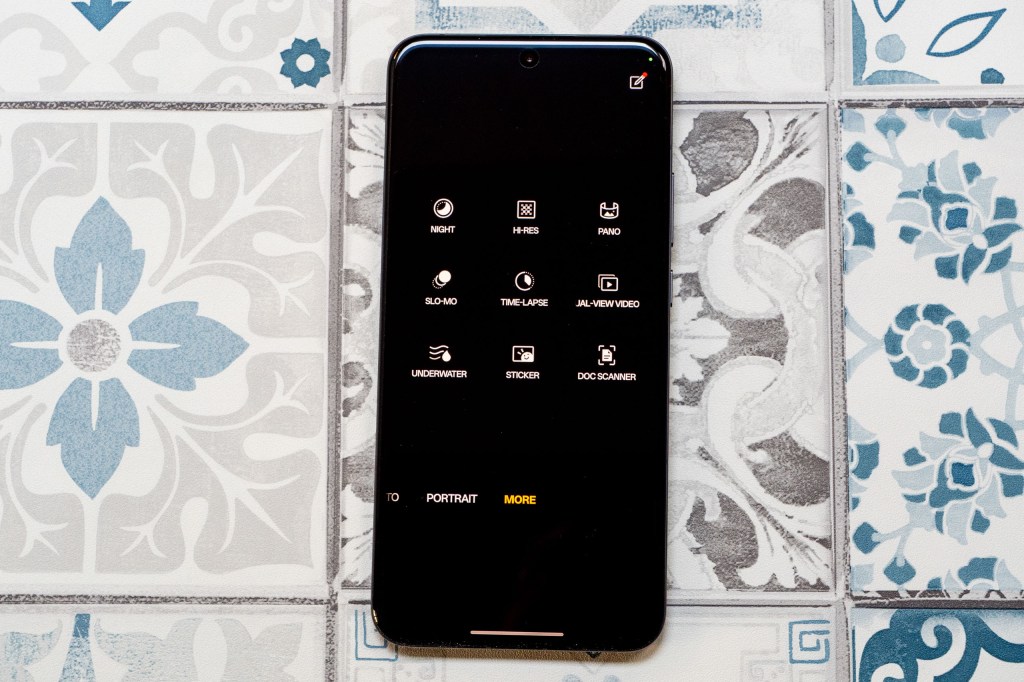
With the new AI editor you get a range of useful tools, such as the ability to erase things you don’t want in the scene, removal of reflections from glass and such like and even Unblur. As is usually the case here, performance varies depending on the starting scene. If you’ve got a fairly clean background, it does a good job – and it can be genuinely useful for quickly cleaning up landscape shots and so on.
Oppo Reno 13 Pro: Image Quality and Performance

You can create some lovely images with the Oppo Reno 13 Pro, with it putting in a great performance for a model at this price point.
The best results come from the 1x lens, which produces some lovely detailed shots and nice vibrant colours that aren’t wildly dazzling like I sometimes see from some of the cheaper brands. Colours are reasonably well matched between the lenses, too.

I can see the worst results from the ultrawide lens, which is hardly a surprise considering the low resolution. Still, if your photos only ever live on your phone or maybe on social media, they do the job well enough.

The telephoto lens puts in a pretty good performance, and this is nice to see on mid-range phone. Some may prefer better quality from their ultrawide lens than a telephoto, but there will be plenty of people who argue the telephoto should be stronger.
What about the digital zoom. Well, results are pretty good at 7x, I’d be more than happy to use these pictures. Even 16x is relatively good, but once you’re past about 20-30x, the images are not great – with a huge amount of lost detail. As usual, the 120x zoom function listed is more about marketing than anything else – but pretty much all the big name phone companies are guilty of this, so I won’t blame Oppo too much here.
In low light, you can get some decent images using the 1x lens, but the ultrawide is a bit of a dud. Again, not really a surprise considering the spec sheet. When light is really low, selecting the 3.5x option actually takes a crop from the 1x sensor, which makes sense. The results are OK, but not great. I don’t know many people who are regularly shooting low light zoom photos though, so that’s not a big downside.

Macro shooting relies on the underwhelming ultrawide too, so it’s not amazing. Still, plenty of mid-range and budget phones have no macro capability at all (I’m looking at you iPhone 16e), so it’s better than that. Again, if your photos are for social sharing and so on only, then they’re just about fine.

Portrait mode produces some nice results. It can be a bit tricky around hairlines, especially if there’s something busy in the background, but it’s not too bad if you don’t scrutinise the images too closely.

For selfies, we’ve got a really good selfie camera here. 50MP and AF, that’s better than even high-end flagships on the market such as the Samsung Galaxy S25 Ultra or the Xiaomi 15 Ultra. The results are sharp and detailed, and the blurred background effect can also be applied pretty well too.
Oppo Reno 13 Pro: Value for Money
At £649, the Reno 13 Pro isn’t super expensive per se, but when you consider the rest of the market, it’s not super cheap either.
In terms of Android competitors, you have the Samsung Galaxy A56 (£499 for 256GB, the same storage as the Oppo Reno 13 Pro) or the Samsung Galaxy S24FE (£549 for 128GB, £599 for 256GB), both available for less than the Reno 13 Pro, and both also offering a triple lens setup.
There’s also the Google Pixel 9a ($499/£499 for 128GB or $599/£599 for 256GB), which is also cheaper, but with that you only get two lenses, losing the telephoto option that you would have with either the Oppo Reno 13 Pro or the Samsung Galaxy S24FE.
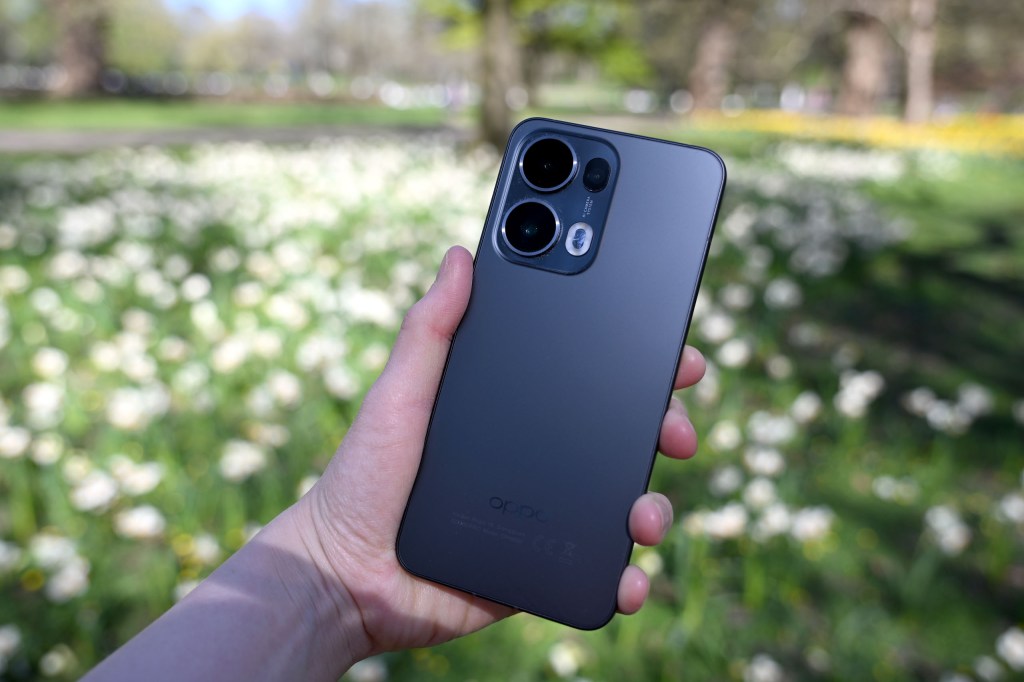
Perhaps if you favour an ultrawide you’d go for the Samsung / Google, but if you prefer a telephoto, then the Reno 13 Pro is the one for you.
Looking outside of Android, there’s the iPhone 16e, with prices of $599/£599 (128GB), $699/£699 (256GB) or $899/£899 (512GB). The Oppo Reno 13 Pro is unquestionably better value than that, but, the iPhone is undoubtedly overpriced for what you get (just one lens for example) so that’s not a huge compliment.
It’s also worth remembering that Oppo has stuck a large price premium on the 13 Pro compared to last year’s models. You do get some improvements, such as added AI functionality and a tougher device though, so it depends on what you consider “worth it”.
On the whole, the Reno 13 Pro is decently priced, but there are cheaper options out there. But, if you want a telephoto lens in a fairly tough device that looks pretty smart too, it could be worth the outlay.
Oppo Reno 13 Pro: Verdict
There’s lots of things to like about the Oppo Reno 13 Pro, and it’s great to see just how good phones in the mid-range are now. It means you no longer have to fork out huge sums to get a well-performing camera for example, which is important to a lot of people.
Now, let’s be fair, this is not a perfect camera system. But, the main camera does a great job and it’s nice to have a telephoto that is actually decent at this price point. It’s a shame not to have a well-performing ultrawide to complete the trio, but I suppose there has to be a compromise somewhere.
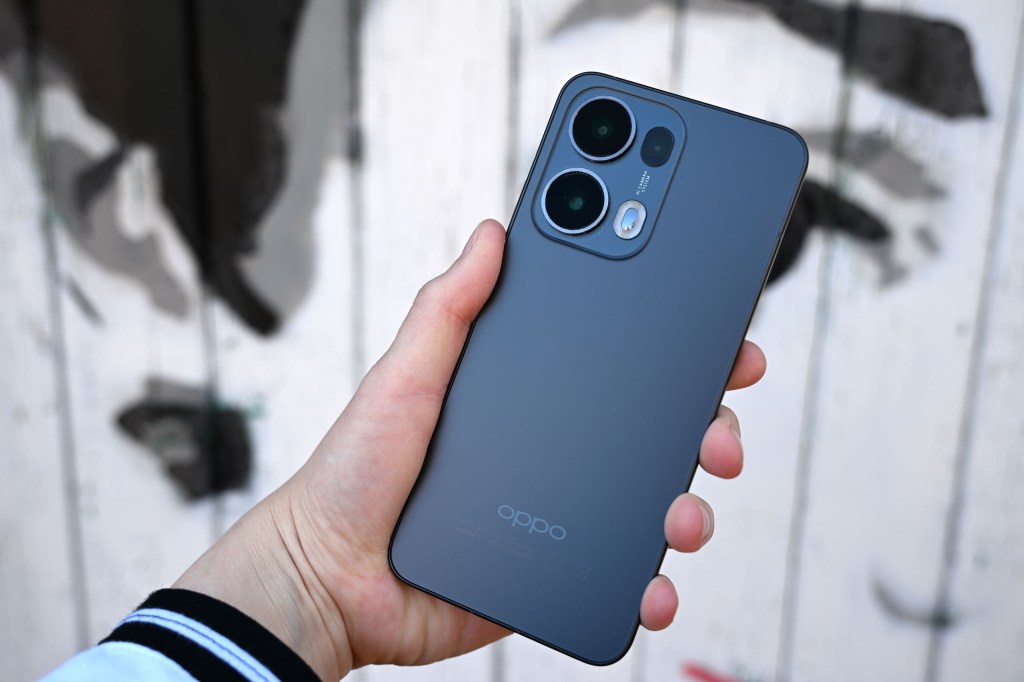
Aside from the camera, the Reno 13 Pro look stylish and has some decent tough credentials. I’d like to see a brighter screen, but it’s not terrible. I’m impressed by the big battery life, too.
Overall, whether you’re drawn to the Reno 13 Pro might come down to a number of factors. Consider whether you’d be happy to pay extra for the newer functions of this model over its predecessor (which you can still pick up for around £400 at the time of writing).
Consider also whether you’d prefer to have a good telephoto or a good ultrawide – it seems in this market it’s next to impossible to have both.
Would you get one?


